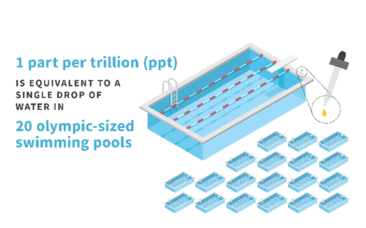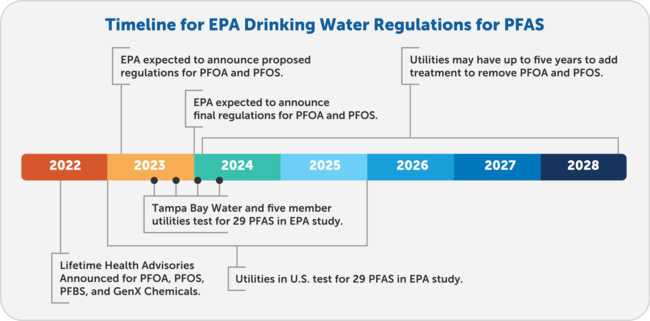Protecting drinking water quality remains our #1 priority¶
For over 130 years, the Tampa Water Department has delivered safe, clean water that meets all federal and state regulatory standards. The Environmental Protection Agency (EPA) recently issued proposed regulatory standards to manage the risk for a group of man-made chemicals in drinking water called PFAS (Per- and polyfluoroalkyl substances). If finalized, the standards will not take effect for several years.
We want to explain EPA’s recent actions to regulate PFAS exposure and describe the research that the Tampa Water Department has already done, and continues to do, in this area.
Quick facts about PFAS, a human-made contaminant ¶
What are PFAS compounds?¶
PFAS is a large family of compounds that include up to 5,000 chemicals. Since the 1940s, PFAS compounds have been widely used in the manufacturing of carpets, clothing, fabrics for furniture, paper packaging for food, and other materials including Teflon-coated products. They are also used in firefighting foam and in industrial processes. Two prominent PFAS chemical compounds include:
- Perfluorooctanoic acid (PFOA). PFOA has been used to make Teflon and other similar chemicals.
- Perfluorooctane sulfonate (PFOS). PFOS has been used to make stain repellents like Scotchgard™ and fire-fighting foams



